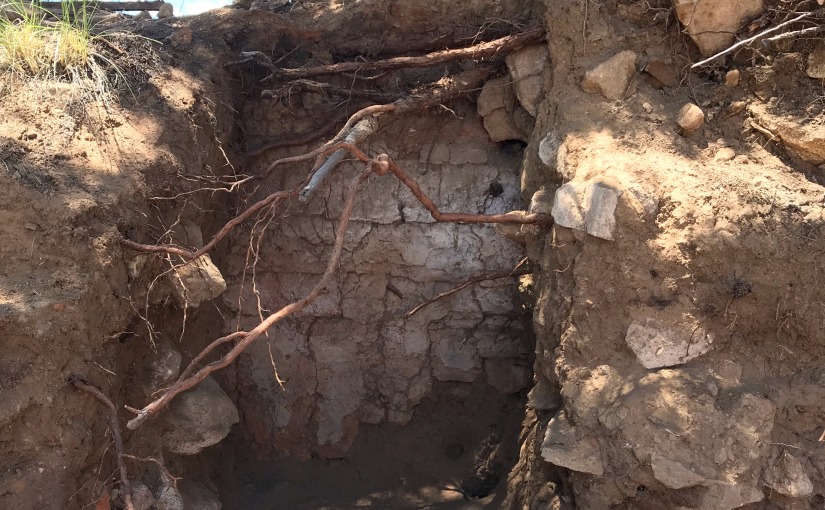By: Francesca Servidio
After excavation is completed for a project, the archaeologist’s work is not over. Those conducting the research still have to decide how to leave the site. Common solutions (often called site treatments) after digging include backfilling—the practice of covering the entire site or feature—or leaving the site open in hopes that it will be respectfully viewed by the public. Both options come with significant costs and benefits, which means this step of the process can be heavily debated by archaeologists.
Oddly, archaeologists who are busy arguing with their colleagues about whether or not to fill a site often forget the wishes of the descendants of the communities who created them. We can see evidence of archaeologists doing this regularly. For instance, at the Aztec Ruins in northern New Mexico, archaeologists recreated a great kiva—a structure that remains sacred to Pueblo communities in the Southwest—not only incorrectly, but against the wishes of many who could trace their ancestry back to the site (1).

The focus was incorrectly placed on creating a space fit for modern architectural senses, such as increasing the height of the kiva roof and creating windows, instead of on the intentions of the former inhabitants who choose to leave the site to naturally return to the earth. As a young, white cis-woman studying anthropology and archaeology, I try to remember that my perspective is influenced by my history and place in society. Broader, inclusive conversations can help create better solutions and recreations.
Each site in the American Southwest must be looked at individually, weighing the risks of forgoing preservation through in-filling and the benefits that could be gained from the public being permitted to view the heritage site. Sometimes, the risk of sites being more harshly subjected to degrading factors due to their increased accessibility is outweighed by the need to use these cultural resources to educate the public. In these cases, if the non-Native communities that surround the open sites, who work with them, who visit them, and who are not aware of their significance are shown how important these places are, we hope they will maintain the sites as stewards along with the members of the descendant groups.
Any interaction that archaeologists have with a historical site, feature, or artifact that disturbs its context is destructive. Archaeologists backfill to avoid future destruction to buildings and ancient houses. When archaeologists choose to backfill a site, it is often because they believe that future archaeologists could come back to work on it and gain new information from the parts of the site that remain in context. It was only recently that archaeologists decided that leaving all excavated sites open may not be the best way to preserve both the sites themselves and the relationship with surrounding indigenous communities. When an archaeologist chooses to leave a site open, the fragile artifacts and features are left exposed to wind, rain, fire, and further destruction at the hands of humans. This can be seen at the Gallina site we are working on in the Llaves valley where of the two unit houses that share a wall, only one was backfilled after excavation by the archaeologist. The unit house that was backfilled shows much better preservation of the plaster walls, adobe wing walls, and adobe hearth.
Yet, when sites are left open the exposure to the elements can also come with the potential of inspiring people to learn from and protect our human heritage. Some sites, like Nogales Cliff House are located in places that have not experienced the gradual deposition of soil, but are also better protected from the weather. When archaeologists came upon sites like the Nogales Cliff House over a hundred years ago, many were in a similar condition to how they appear today (although Nogales has been heavily eroded after excavations without backfill in one area open to the wind and rain).

Could there already be enough sites left naturally and artificially exposed to serve the purpose of motivating more to learn about our past? Until more sites are discovered and excavated, it is impossible to say. But, I sure hope that there’s still more to be found to shape our view of the past. However, the desire to respect the choice of the former inhabitants to leave their sites as they were hundreds of years ago, the hope for new, less destructive technology, and the fact that covering a site means that the area on top can be used for other things—like ranching—highlights the importance of backfilling.
(1) These decisions are now openly discussed with visitors at Aztec.



